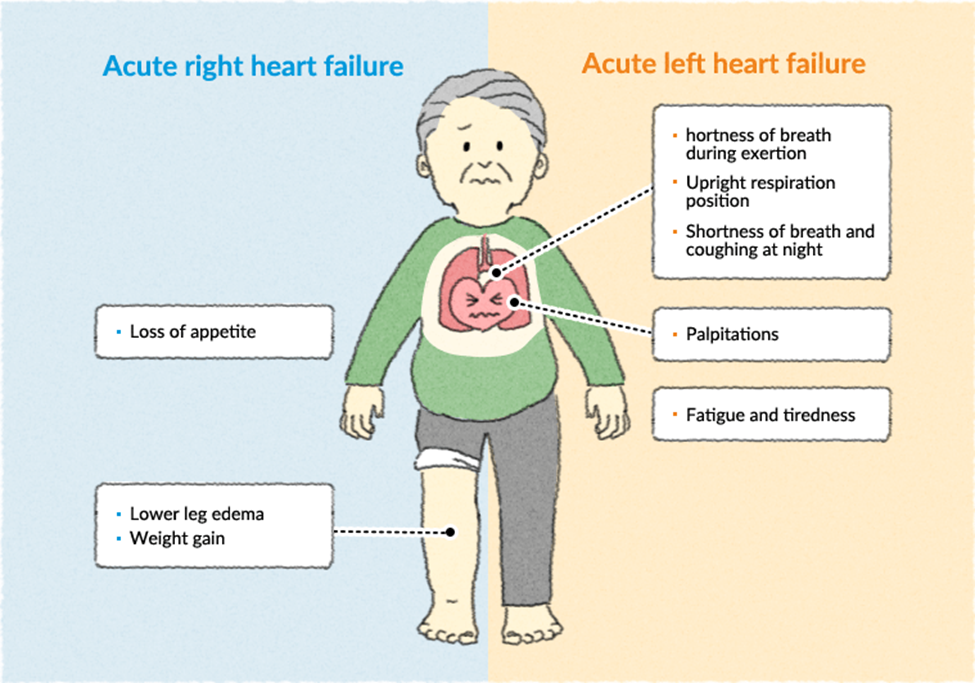A nurse is assessing a toddler who has heart failure. Which of the following findings should the nurse expect?
Orthopnea
Bradycardia
Weight loss
Increased urine output
The Correct Answer is A
A. Orthopnea
Explanation:
Orthopnea refers to difficulty breathing that occurs when lying flat. In heart failure, fluid may accumulate in the lungs, leading to respiratory distress when the child is in a supine position. Orthopnea is a common symptom of heart failure in both adults and children.
B. Bradycardia
Explanation: Bradycardia (slow heart rate) is not a typical finding in heart failure. Heart failure often leads to compensatory mechanisms, including an increased heart rate (tachycardia), to maintain cardiac output.
C. Weight loss
Explanation: Weight loss is not a typical finding in heart failure. In fact, heart failure in children may lead to fluid retention and weight gain rather than weight loss.
D. Increased urine output
Explanation: Heart failure in toddlers is more likely to be associated with decreased urine output rather than increased urine output. Reduced cardiac output can result in decreased blood flow to the kidneys, leading to decreased urine production and potential fluid retention. Increased urine output is not a characteristic finding in heart failure.

Nursing Test Bank
Naxlex Comprehensive Predictor Exams
Related Questions
Correct Answer is C
Explanation
A. 9 months: By 9 months, most infants would have well exceeded doubling their birth weight.
B. 12 months: Doubling of birth weight usually occurs earlier, by around 5 to 6 months, rather than 12 months.
C. 6 months
Explanation:
The general guideline is that infants tend to double their birth weight by around 5 to 6 months of age. This doubling of birth weight is a common marker of healthy growth and development during the first few months of life.
D. 3 months: By 3 months, while infants experience significant growth, they usually haven't doubled their birth weight yet.
Correct Answer is ["A","D","F"]
Explanation
A.Move furniture away from the child.
Explanation: Creating a safe environment is important during a seizure. Moving furniture away from the child helps prevent injury.
B.Place the child in a prone position.
Explanation: Placing the child in a prone position (face down) is not recommended. The child should be placed on their side to allow for drainage of oral secretions and to prevent aspiration.
C. Restrain the child.
Explanation: Restraint is generally not recommended during a seizure, as it may cause injury to the child or the person providing care. Allow the seizure to run its course, and focus on keeping the environment safe.
D.Time the seizure.
Explanation: Timing the duration of the seizure is important for medical evaluation and management. Note the start and end times of the seizure.
E. Insert a padded tongue blade in the child's mouth.
Explanation: Inserting any object, including a padded tongue blade, into the child's mouth during a seizure is not recommended. This can lead to oral and dental injuries. Maintaining a clear airway and protecting the child from injury are priorities.
F. Stay with the child.
Explanation: Staying with the child provides support and ensures the child's safety during the seizure. It also allows the caregiver to observe and provide information to healthcare professionals.
Whether you are a student looking to ace your exams or a practicing nurse seeking to enhance your expertise , our nursing education contents will empower you with the confidence and competence to make a difference in the lives of patients and become a respected leader in the healthcare field.
Visit Naxlex, invest in your future and unlock endless possibilities with our unparalleled nursing education contents today
Report Wrong Answer on the Current Question
Do you disagree with the answer? If yes, what is your expected answer? Explain.
Kindly be descriptive with the issue you are facing.
